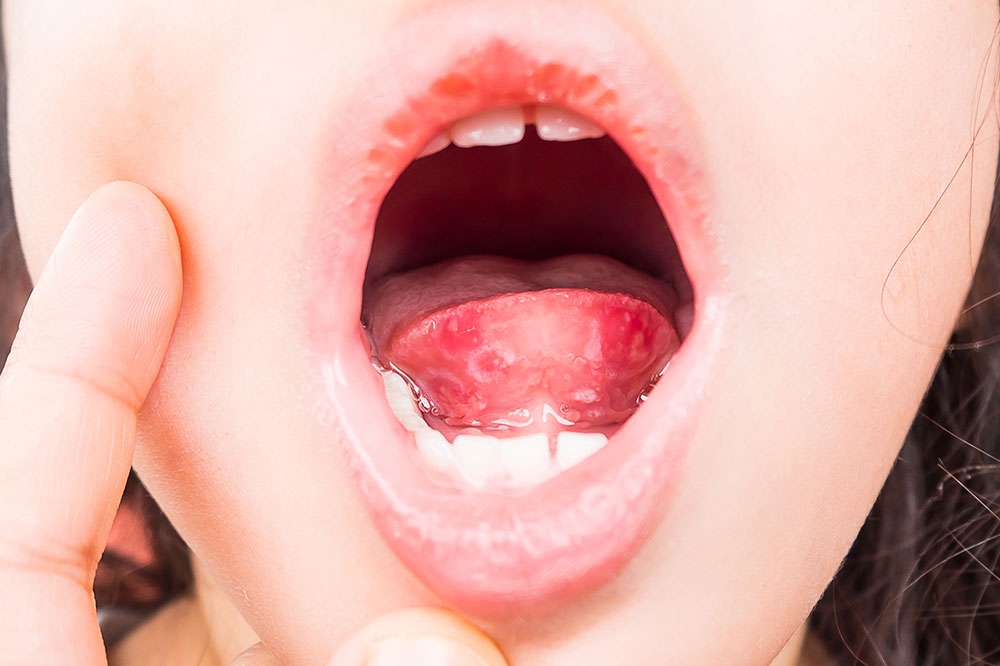
Herpangina – Causes, symptoms, and remedies
Herpangina is characterized by the sudden onset of fever, sore throat, and small, painful blisters or ulcers in the back of the throat or the roof of the mouth. It is commonly seen in children, especially those between three and ten, and tends to occur in outbreaks in communities or schools. The condition is highly contagious and can spread through respiratory droplets or contact with contaminated surfaces. This post discusses herpangina’s causes, signs, and treatments.
What causes herpangina?
The condition is caused by the coxsackie virus from the enterovirus family. There are many different strains of the coxsackie virus, and they can cause a wide range of illnesses, such as herpangina, hand-foot-and-mouth disease, and viral meningitis. The virus is very contagious and can easily spread from one person to another through coughs, sneezes, or by touching contaminated objects like toys, doorknobs, and utensils. Because of this, the condition is prevalent in places where children spend a lot of time together, like schools, daycares, and homes.
Herpangina tends to occur in outbreaks or epidemics, with higher incidence rates reported during the summer and early fall. This may be due to increased social interactions and close contact among children during warmer weather, which can facilitate the spread of the virus.
While anyone can suffer from herpangina, children with weakened immune systems are more susceptible, especially those who have recently had other viral infections or have underlying health conditions. The ailment is more common in children under five, as they may not yet have immunity to the coxsackie virus. However, older children and adults can also be affected by herpangina, although less frequently.
What are the common signs and symptoms?
This viral infection is characterized by a quick onset of fever, a painful throat, and tiny blisters or ulcers on the tonsils and the back of the throat. The typical herpangina warning signs and symptoms include:
Painful blisters or ulcers
Blisters or ulcers that hurt can appear on the tonsils, soft palate, back of the throat, or roof of the mouth. These lesions are usually tiny, red, and painful.
Trouble swallowing
Blisters or ulcers in the throat can make swallowing challenging and painful.
Fever
Herpangina is usually accompanied by a fever, which can be mild or severe.
Headache
People with the condition sometimes get headaches.
Fatigue
Herpangina can make it difficult to conduct daily tasks due to weariness and general sickness.
Nausea and vomiting
Some may feel queasy or sick to their stomach.
Herpangina is a self-limiting condition that usually goes away by itself in five to seven days. However, one should consult a healthcare professional if they suffer symptoms that do not go away. Treatment may be required in some circumstances to control symptoms and avoid complications.
How is the condition treated?
This viral illness has no specific treatment, but supportive care can be recommended to alleviate its symptoms and promote recovery. The following are a few common remedies for herpangina:
Pain relief
Doctors may recommend treatments to reduce fever and relieve throat pain and other discomforts.
Hydration
Drinking sufficient fluids, such as water and electrolyte solutions, can help prevent dehydration, particularly if the child is experiencing difficulty eating or drinking due to painful blisters.
Soft meal plan
Soft, cool, and non-acidic foods can help soothe the throat and make swallowing easier. A few safe options include bananas, smoothies, rice, and dairy products.
Mouth rinses
Gargling with warm salt water or using mouthwashes can help reduce pain and promote the healing of the blisters.
Rest
Getting plenty of rest is critical when dealing with any health condition. It can aid the body in recovering from the viral infection and promote healing.
It is essential to seek the advice of a healthcare professional before using any treatment for children, especially infants or toddlers. Administering the wrong treatment or using the incorrect dosage can lead to side effects and increase the risk of complications.
Since herpangina is caused by the coxsackie virus, which is very contagious, children should take precautions to prevent an infection. The virus can spread quickly through droplets in the air or by touching objects that have been contaminated. One way to prevent an infection is to maintain good hygiene. Kids should be encouraged to cover their mouths while coughing or sneezing and wash their hands frequently, especially before meals.
Herpangina causes a sore throat, fever, and painful sores or boils in the mouth and throat. Even though it is generally a short-term illness that goes away within a week, one should consult a doctor if they think their symptoms are worsening. Staying hydrated and resting can make the disorder less painful.




